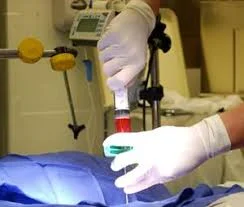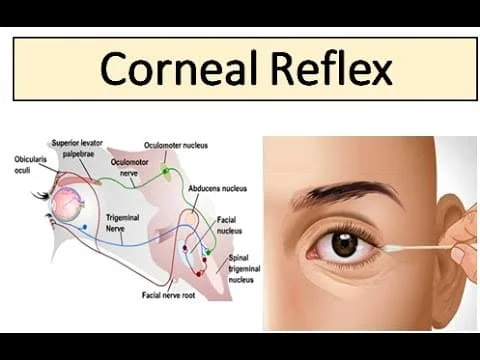Bone Marrow Aspiration
Table of Contents
Introduction
A bone marrow aspiration is a procedure in which a sample of the liquid part of the soft tissue inside your bones is taken.
The spongy tissue found inside bones is known as bone marrow. Inside larger bones, it contains cells that produce white blood cells (WBCs), red blood cells (RBCs), and platelets, such as the:
- breastbone
- hips
- ribs
WBCs aid in the fight against infection. RBCs transport oxygen and nutrients throughout the body. Platelets help your blood clot.
The number of red blood cells, white blood cells, and platelets in a complete blood count (CBC) can be abnormally high or low. If this occurs, your doctor may want to look at your bone marrow to determine the cause.
A bone marrow aspiration is frequently combined with a bone marrow biopsy. A bone marrow biopsy, on the other hand, uses a different needle to remove solid tissue from your bone marrow.
Why is Bone Marrow Aspiration performed?
Some diseases are linked to faulty bone marrow. If preliminary blood tests reveal abnormal white, red, or platelet cell levels, your doctor may recommend a bone marrow aspiration.
The test aids in the identification of a specific disease and monitors the progression or treatment of a disease. The following conditions and diseases are associated with bone marrow problems:
- A low red blood cell count is defined as anemia.
- diseases of the bone marrow, such as myelofibrosis and myelodysplastic syndrome
- Blood cell disorders such as leukopenia and polycythemia vera
- Leukaemia and lymphoma are examples of bone marrow or blood cancers.
- Hemochromatosis is a genetic disorder in which iron accumulates in the blood organs and tissues.
- infection, particularly chronic diseases such as tuberculosis storage diseases such as amyloidosis or Gaucher’s disease
If you are undergoing cancer treatment, bone marrow aspiration can be an important test. It can assist in determining whether the cancer has spread to the bones.
The Risks of Bone Marrow Aspiration
While bone marrow exams are risk-free, all medical procedures are. Complications could include:
- Anesthesia-related allergic reaction
- excessive bruising
- infection
- long-term discomfort
The dangers are uncommon and are usually associated with conditions that cause a weakened immune system or a low platelet count. You are more susceptible to infection if your immune system is compromised. A low platelet count raises the possibility of excessive bleeding.
Procedure Specifications of Bone Marrow Aspiration
What occurs before an aspiration?
Before aspiration, most people can eat and drink normally. Tell your doctor about all the medications you take. Certain medications, such as blood thinners, may need to be discontinued before the procedure.
Your youngster will be inspected before the test. Before your child may have this operation, blood may need to be collected and examined.
The examination will take place in the surgical center, main operating room, or procedure center.
For the procedure, your youngster will be sedated or anesthetized by IV. This implies that your child will be given medication to help him or her relax or sleep throughout the exam.
A healthcare professional who specializes in hematology (blood) or oncology (cancer) will do the test.
What exactly occurs during an aspiration?
Typically, your healthcare provider will collect bone marrow from your pelvis (hip bone). They will insert a needle into your lower back, near your hip.
Your healthcare provider gives you a numbing medication injection right before a bone marrow aspiration so you don’t feel anything during the procedure. Sedation, in which you remain awake but relaxed, may also be used by your healthcare provider.
You lie on your stomach or side on an exam table during the aspiration. The technician or doctor will then:
- In your pelvic bone, a hollow needle is inserted.
- Attaches a syringe to the needle to collect a sample of bone marrow liquid.
- The needle and syringe are removed.
- Apply a bandage to the affected area to prevent infection and promote healing.
What occurs after an aspiration?
After the test, the spot is pressured and a pressure dressing (bandage) is applied. Your youngster will be taken to the recovery area and monitored regularly.
This dressing should be used for 24 hours and should be examined often.
While the dressing is in place, your child should not bathe or shower.
Take off the dressing after 24 hours.
When the effects of the medication have worn off, your youngster may resume normal activity.
The retrieved bone marrow or bone fragments will be examined under a microscope and submitted for additional tests as needed. Your child’s doctor will go over the test results with you and go over the treatment plan.
You will be discharged from the hospital on the same day as your bone marrow aspiration. Depending on the type of anesthesia used, you may need to wait at your healthcare provider’s office for the effects to wear off. After the procedure, you must be driven home by someone.
Summary
Bone marrow aspiration is a procedure that involves taking a sample of the soft tissue inside bones, which contains cells that produce white blood cells (WBCs), red blood cells (RBCs), and platelets. It is often combined with a bone marrow biopsy to identify and monitor the progression or treatment of certain diseases. Bone marrow problems can lead to conditions like anemia, bone marrow diseases, blood cell disorders, leukemia, lymphoma, hemochromatosis, and infections.
The risks of aspiration include anesthesia-related allergic reactions, excessive bruising, infection, and long-term discomfort. The procedure typically involves collecting bone marrow from the pelvis, inserting a needle into the lower back, and applying a pressure dressing to the affected area. After the aspiration, the patient is pressured and monitored for 24 hours, and the retrieved bone marrow or bone fragments are examined under a microscope and submitted for additional tests as needed. The doctor will discuss the test results and treatment plan with the patient.
In summary, bone marrow aspiration is a crucial test for identifying and monitoring the progression of certain diseases. It is often combined with a bone marrow biopsy to provide a comprehensive evaluation of the patient’s bone marrow.
FAQs
Adults frequently choose the posterior iliac crest, although other available locations include the sternum (aspiration only) and the anterior superior iliac crest in obese patients. Pain, bleeding, and infection are all possible consequences of procedures performed on the posterior iliac spine.
The spinous processes of the vertebrae, the femur, and the humerus are also less typically used sites.
Before bone marrow aspiration, most patients can eat and drink normally. Inform the doctor while you are currently taking any drugs or supplements. Certain drugs, such as blood thinners, may need to be discontinued before the surgery.
These are some examples:
Anemia.
Leukopenia, leukocytosis, thrombocytopenia, thrombocytosis, pancytopenia, and polycythemia are all blood cell illnesses characterized by the formation of either too few or too many different types of blood cells.
Leukemias, lymphomas, and multiple myeloma are all examples of blood or bone marrow cancers.
References
- Professional, C. C. M. (n.d.). Bone Marrow Aspiration. Cleveland Clinic. https://my.clevelandclinic.org/health/treatments/22297-bone-marrow-aspiration
- Bone marrow aspiration: MedlinePlus Medical Encyclopedia. (n.d.). https://medlineplus.gov/ency/article/003658.htm
- Krans, B. (2018, June 27). Bone Marrow Aspiration. Healthline. https://www.healthline.com/health/bone-marrow-aspiration
- Bone Marrow Aspiration Test. (n.d.). https://www.nationwidechildrens.org/family-resources-education/health-wellness-and-safety-resources/helping-hands/bone-marrow-aspiration-test
- Reagan, J. L. (n.d.). Bone Marrow Aspiration and Biopsy Technique: Aspiration, Biopsy, Aspiration at Sternum. https://emedicine.medscape.com/article/207575-technique?form=fpf
- Bone marrow biopsy and aspiration – Mayo Clinic. (2022, December 1). https://www.mayoclinic.org/tests-procedures/bone-marrow-biopsy/about/pac-20393117





